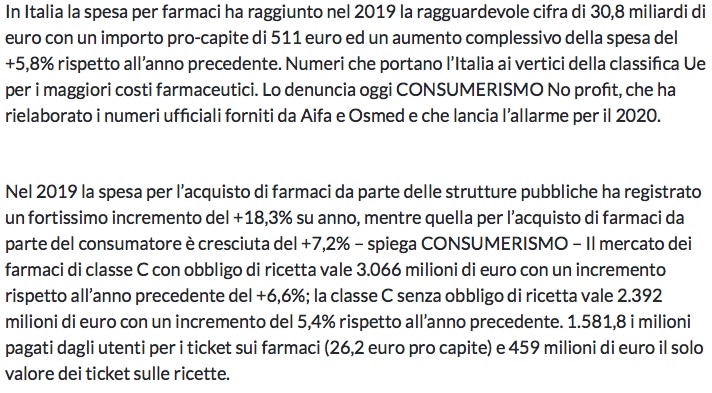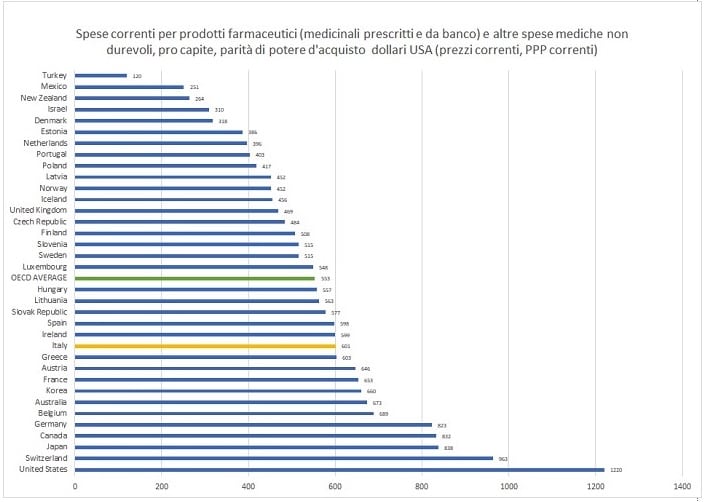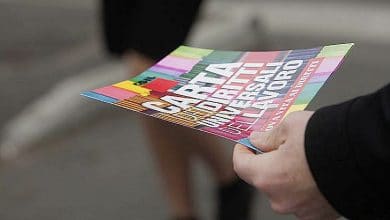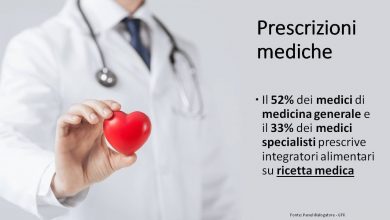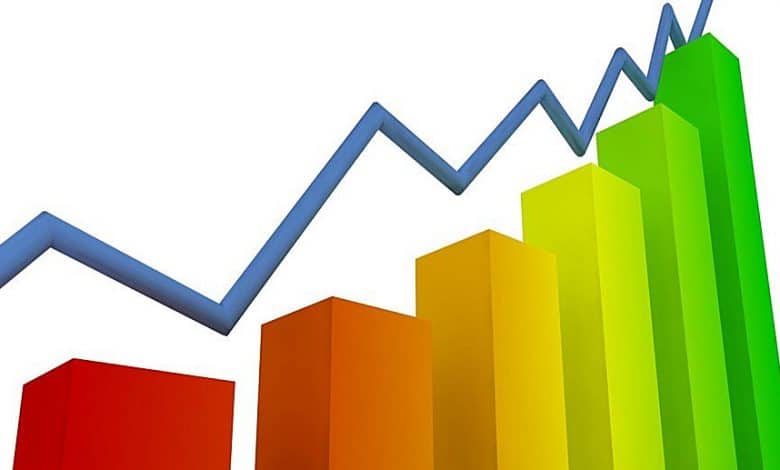
“Consumerismo” denounces the excessive consumption of drugs in Italy, arguing that we are at the top of the European Union classification. We report some excerpts and refer to thefull article for those who want to learn more
Italians "addicted" to drugs. The analysis of Consumerismo NP
HEALTHCARE, CONSUMERS REPORT: IN ITALY ABNORMAL GROWTH IN EXPENDITURE FOR DRUGS, WE ARE AT THE TOP OF THE EU RANKING
The OsMed report elaborated by Aifa tells us that in 2019 the drugs purchased by citizens out of their own pockets are growing. Class C medicines recorded an expenditure of 5.7 billion euro – with an increase of 6.6% – of which 53.6% for medicines purchased by prescription and 46.4% for Sop and Otc self-medication medicines. The Report notes it 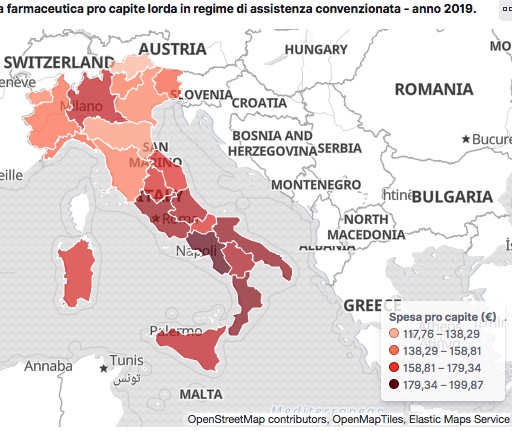 national OsMed 2019 'The use of drugs in Italy', created by the Italian Medicines Agency (Aifa).
national OsMed 2019 'The use of drugs in Italy', created by the Italian Medicines Agency (Aifa).
Furthermore, in 2019 in Italy, the per capita pharmaceutical expenditure, including medicines purchased directly from public health facilities and those dispensed through the affiliated channel, was equal to 384.43 euros. In 2019, total pharmaceutical expenditure was €30.8 billion, an increase of 5.8% compared to the previous year.
Farmindustria then in its “Pharmaceutical indicators” published last July claims that the average price of medicines in Italy is the lowest among the large European countries.
2019 recorded a slight increase in the prices of medicines (+0.2%), with inflation at +0.6%. The fall in the prices of reimbursable medicines continues, -1.0% compared to the previous year.
Despite the plus sign of the 2019 figure, in the long term the price of medicines is decreasing: since 2001 they have fallen overall by 34.2%, against an increase in inflation of 33.3% and cost increases in practically all their voices.
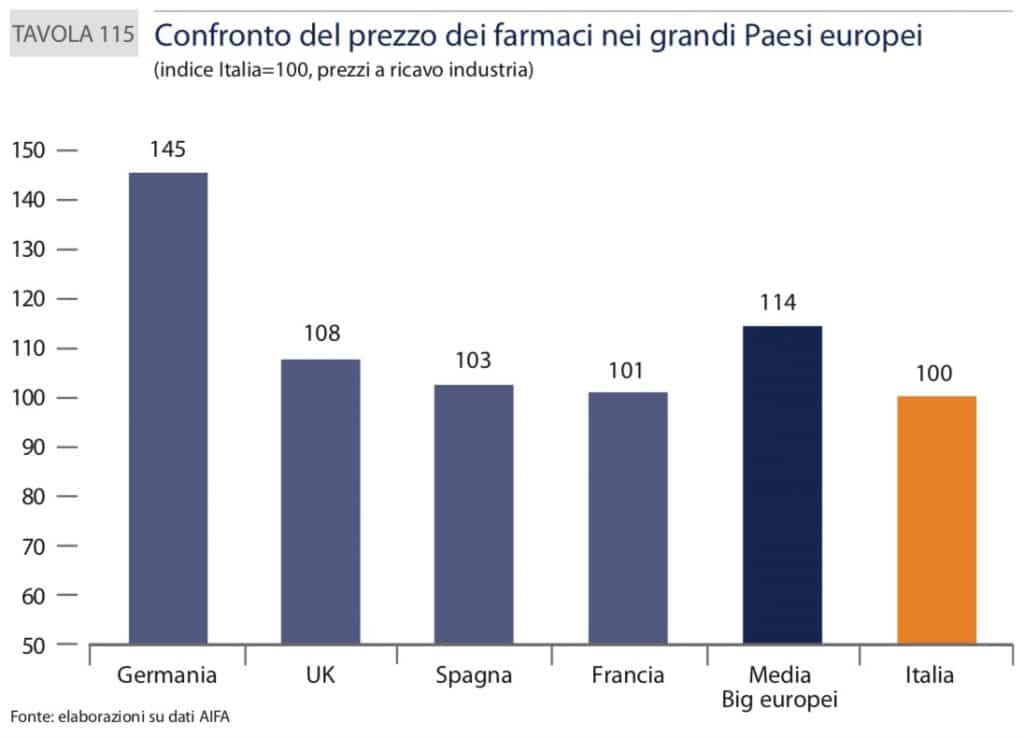 Even more evident is the drop for reimbursable medicines which, also as a result of the many cutting maneuvers that have taken place over the years, have decreased by 51% from 2001 to 2019.
Even more evident is the drop for reimbursable medicines which, also as a result of the many cutting maneuvers that have taken place over the years, have decreased by 51% from 2001 to 2019.
In comparison with the other EU countries, since 2001 Italy has shown a worse performance (-34.2% compared to an average of +31.8%). These data confirm the historical trend of the relationship between drug prices and inflation, generally declining in all European countries, but more rapidly in Italy.
The average industrial revenue in Italy for pharmacy products in 2019 is almost stable, although declining in the last ten years and among the lowest among the main EU countries (5.7 euros compared to an average of 10.4).
In the end the OECD makes a focus on spending on pharmaceuticals. Current expenditure as a percentage (prescribed and over-the-counter medicines) together with what the OECD defines as "other non-durable medical expenses" (which according to Istat definitions are personal care products, i.e. soaps, cosmetics, etc.) , is 17.5% in Italy and 16.1% on the OECD average, with all major EU partners recording a lower incidence (Germany 14.1%; France 13.2%; United Kingdom 11.9%) and with the Hungary at the top (27.9%) and Denmark bringing up the rear (6.3%).
The ranking changes slightly this time considering the per capita expenditure at purchasing power parity:Italy is at 601 dollars, the OECD average at 553. But of the major EU partners, it is still below the United Kingdom with 469 dollars, while France (653) and Germany (823) fly above Italy. The highest value is that of the United States which surpasses Switzerland with 1,220 dollars against 963, while this time Turkey is in line with 120 dollars per capita.
But assimilating medicines and bars of soap doesn't seem very correct to us.
Basically, as happens in many things, the data change according to what the observer wants to demonstrate. The only certain fact is that Einstein was right: everything is relative.
Related news: Gimbe Report. The 2010-2019 definancing of the NHS

